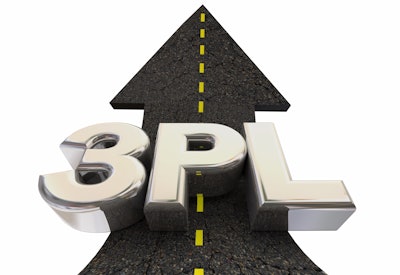
For years, parcel shipping in the United States has been a game with three players: FedEx, UPS, and USPS. The rules were set. The rates were the rates, and they came with unpredictable surcharges and fees. If you were a high-volume shipper, odds are your network, your budget and your promises to customers were built around your carriers’ schedules and constraints.
That’s changing.
New market sizing data from The Colography Group and Tusk Logistics shows that alternative carriers (those outside the legacy national carriers) have a compound annual growth rate of 34.5% over the past three years. That’s faster than the legacy national carriers and faster than the market overall. That kind of growth doesn’t happen by accident. It’s a sign of real demand, real investment and a market that’s starting to loosen its grip on the old way of doing things.
But here’s the catch: despite near-universal awareness, fewer than 3% of shippers use an alternative carrier as their primary provider. And it’s not because they don’t know the options exist. It’s because they don’t fully trust them.
The trust gap is real
In Tusk’s 2025 Alternative Carrier Benchmark Survey of U.S. logistics leaders, 94% said they are at least considering a switch. Many have tested an alternative carrier in some capacity. But when it comes to making the leap, most hesitate.
When asked why, 76% said trust was the number one barrier. Not cost. Not awareness. Not even integration complexity (though that came up, too). Trust.
Here’s the truth no one likes to admit: in logistics, you can survive without the cheapest rates, but you can’t survive without trust. That hesitation is rational. Shipping isn’t just another operational function, it’s the final touchpoint between your brand and your customer. A missed delivery isn’t just a service failure. It’s a broken promise. And most leaders would rather stick with predictable high costs and known frustrations than risk damaging customer loyalty.
The pain with the status quo
If you’re thinking “it can’t be that bad,” here’s what the data says:
● 65% of shippers cite rising costs as a top pain point.
● 49% report missed or late deliveries.
● 31% deal with unpredictable surcharges and fees.
These aren’t one-off complaints, they’re systemic. And they cut across business models. Omnichannel retailers are especially sensitive to last-mile performance. Manufacturers can’t afford missed handoffs. 3PLs know that any failure reflects directly on them.
So why stay put? Because change is hard and full of risk. Complex shipping networks, entrenched processes, and a lack of proof from peers keep many from moving forward.
What would it take to switch?
We asked shippers exactly that. Across industries and volume tiers, their answers were remarkably consistent:
- Proof of reliability: case studies, independent reviews, and peer validation.
- Meaningful cost savings: enough to justify operational disruption.
- Seamless integration: compatibility with TMS/WMS systems, single API connections.
- Comprehensive coverage: not just regional lanes, but national reach.
- Responsive support: real-time visibility and fast claims resolution.
It’s a simple but high-stakes checklist. Get all five right, and the conversation shifts from “we can’t” to “why didn’t we do this sooner?”
Why early movers will win
There’s a window of opportunity right now. As alternative carriers grow, they’re investing in infrastructure, expanding service areas and improving technology. Early adopters are locking in competitive rates, securing capacity and gaining operational leverage over the Big 3.
And it’s not just about cost savings, though those can be significant. In this survey, 65% of shippers said they’d be “all in” if they could cut parcel costs by 30%. Those kinds of savings, paired with competitive service levels, are already possible today.
Wait too long, and the early-bird advantages disappear. The carriers you want will be full, the rates you could have had will be gone, and you’ll be back to playing defense instead of offense.
The psychology of switching changes as shippers grow
One of the most interesting patterns we saw in the data was how openness to switching changes with volume:
● Low-volume shippers (<10k parcels/month) tend to be the most flexible. They have less at stake per lane and can test more freely.
● Mid-volume shippers (10k–99k/month) are openly frustrated with current carriers, but still cite trust as their top barrier.
● High-volume shippers (100k+ parcels/month) have the most entrenched systems and the highest stakes. Even with high frustration, they’re the least likely to try something new without strong, proven outcomes.
That’s why the best way to start is small. Prove it in one lane. See the data. Build the confidence. You don’t have to flip the switch on your whole network to start reaping the benefits.
From awareness to action
The industry is at a tipping point. The data says the growth of alternative carriers will continue — and likely accelerate — as e-commerce expands, customer expectations rise and national carriers consolidate to protect margins. But growth won’t automatically translate to adoption.
To cross that gap, carriers and their partners must focus less on selling the idea of alternatives and more on proving their performance. Shippers don’t want promises. They want proof.
For logistics leaders, the takeaway is clear: don’t let the fear of change lock you into a model that no longer serves you. Start small. Test specific routes. Gather your own performance data. Build internal buy-in. The ones who act now will be the ones rewriting the rules everyone else has to follow.
The next few years will define the balance of power in U.S. parcel delivery. Those who diversify early will shape the future on their terms. We’ve seen firsthand how the right combination of network coverage, technology, and support can turn hesitation into confidence — and that’s where real market change begins.


















